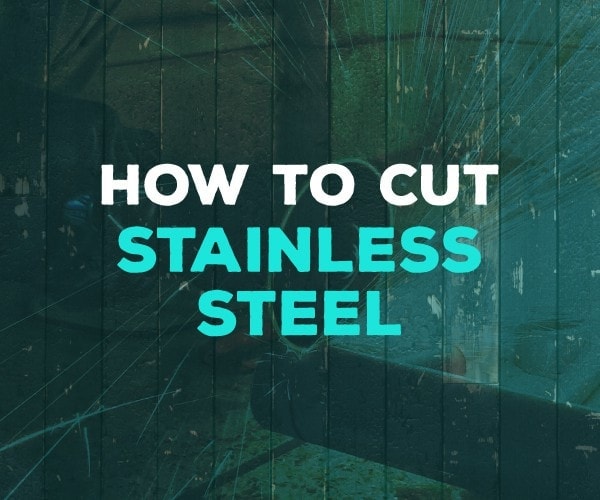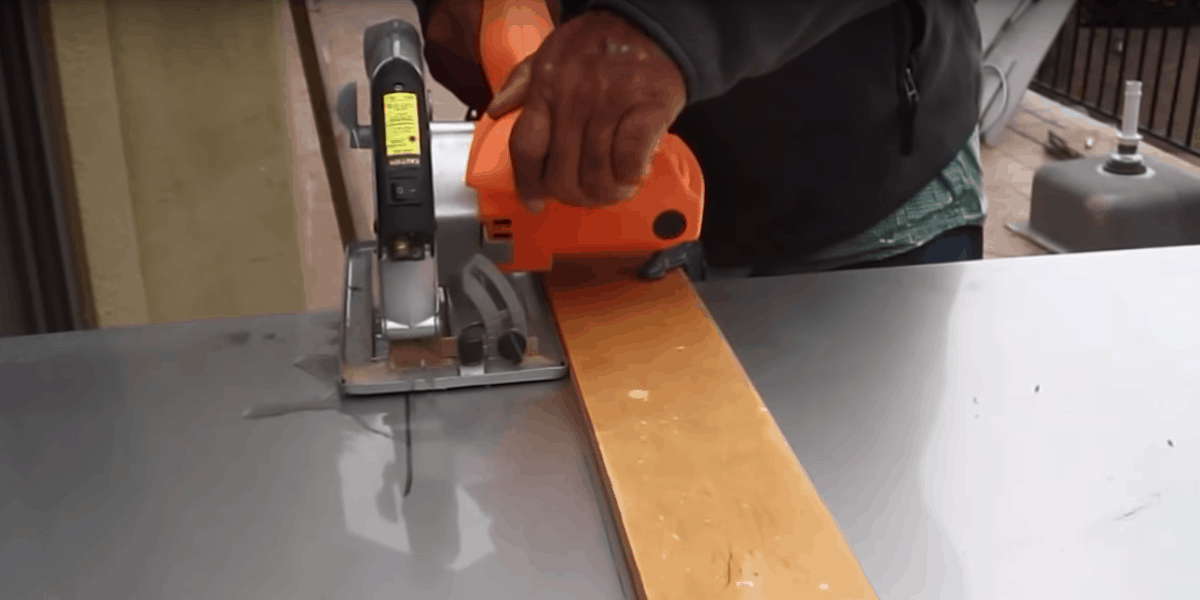Stainless steel is one of the most widely used materials in the world thanks to its strength, durability and corrosion resistance. Considering how strong and durable it is, it’s easy to feel a bit overwhelmed if you find yourself needing to learn how to cut stainless steel.
Fortunately, there are a few different methods that can help you make quick work of the job, and we’re going to cover each of them below.
What You’ll Need
Stainless steel comes in many different forms from sheets to bars to tubes and everything in between. Most often, the thickness of the metal is referred to by gauge. Depending on how thick the steel you’re working with is, you’re going to need one of these three tools:
- Tin snips (for thin sheets)
- Power shears (for thicker sheets)
- Circular saw with metal cutting blade or cut off wheel
- Angle grinder w/ metal cut off wheel (for thicker sheets or tubes)
- Plasma cutter (for very thick sheets, bars or solid tubes)
You’ll also need the following, regardless of which method you choose to cut the steel:
- Safety goggles (a full face shield is even better)
- Work gloves
- Workbench
- Metal file
- Tape Measure
- Marker
Step I: Preparing Your Workspace
Regardless of how you’ll be cutting the metal, you’ll need to prepare your workspace. A nice sturdy workbench or saw horses will be necessary for this project.
If you’re going to be using a saw, grinder, or plasma cutter, it’s best to work outside. Otherwise, make sure you remove anything flammable from the area, as sparks are going to be flying as you cut.
Step II: Measuring For the Cut
Use your tape measure to get an accurate measurement for the area you need to cut. Use your marker to mark off where you need to cut. If you’re going to be cutting a straight line, use a ruler or square to get a perfectly straight line.
Step III: Cutting the Steel
Once you’ve set up your workspace and measured and marked for your cut, it's time to select a tool for the job.
If you’re cutting through thin stainless sheets, tin snips are your best option. Thicker sheets will require power shears, a circular saw or an angle grinder. You can also use a circular saw for stainless tubing. For really heavy duty steel, a plasma cutter is your best option.
Using Tin Snips
If you’re working with thin steel, a pair of tin snips will make quick work of the job. Use the tin snips as you would a pair of scissors and slowly work your way through the material, making sure not to cut yourself on the edge you’ve created.
Using Power Shears
Power shears work a lot like the tin snips, except they have a motor. These shears will chomp out a thin strip of metal from the middle of the cut. To cut stainless with power shears, place the steel into the jaws of the power shears, squeeze the trigger, and slowly work your way through the material until you’ve completed your cut.
Using a Circular Saw
A circular saw can come in handy for cutting through pieces of steel too thick for tin snips or power shears. The most important thing to remember is that you’ll need a proper metal cutting blade.
Before you begin cutting, make sure you’re taking proper safety precautions. Whether you’re using a saw, grinder, or plasma cutter to cut, you’ll need to wear safety goggles (or a full face shield) and heavy-duty gloves. Wearing long sleeves and pants will also help prevent you from getting any metal splinters.
Once you’re prepared, turn the saw on and allow it to reach full RPM before you begin cutting. Then, lower the saw to the surface and allow the saw to slowly work through the material until you’ve completed your cut.
Using an Angle Grinder
With an angle grinder, the same principles you’d apply with the circular saw are in place.
Always make sure you’re wearing safety gear. Allow the tool to reach full RPM before beginning your cut and slowly work your way through the metal.
Using a Plasma Cutter
A plasma cutter is a useful cutting tool that can make quick work out of any metal, including stainless. For thinner material, a plasma cutter may be overkill. But, for thick pieces of stainless, it’s your best option.
First, you’ll need to prepare the plasma cutter. Connect the plasma cutter to your air compressor and turn on the air. Next, set the current for the plasma cutter. The thicker the metal, the higher you’ll set the current. For 18-20-gauge sheet, set the current around 25. Attach the ground clamp to the edge of your material.
Now, you’re ready to begin cutting. Turn the machine on and bring the handle of the torch close to your work surface. Depress the trigger, and you’re ready to begin cutting. Move slowly and deliberately, and do your best to keep a steady hand as you trace your line.
Once you’re finished, shut the plasma cutter off, then disconnect the air and ground clamp and roll up your hoses.
Step IV: Clean Up Your Edge
Once you’ve finished cutting, you’re going to be left with a pretty nasty edge along any of the sides you cut. To truly finish the job, use a file or deburrer to remove the rough edge from your material.
Final Word
Learning how to cut stainless steel is easier than it appears at first glance. Depending on the material you’re using, you’ll be able to cut it using either tin snips, power shears, a circular saw, angle grinder or plasma torch.
Regardless of the method you’re using, be sure to work slowly and safely to complete your project.


